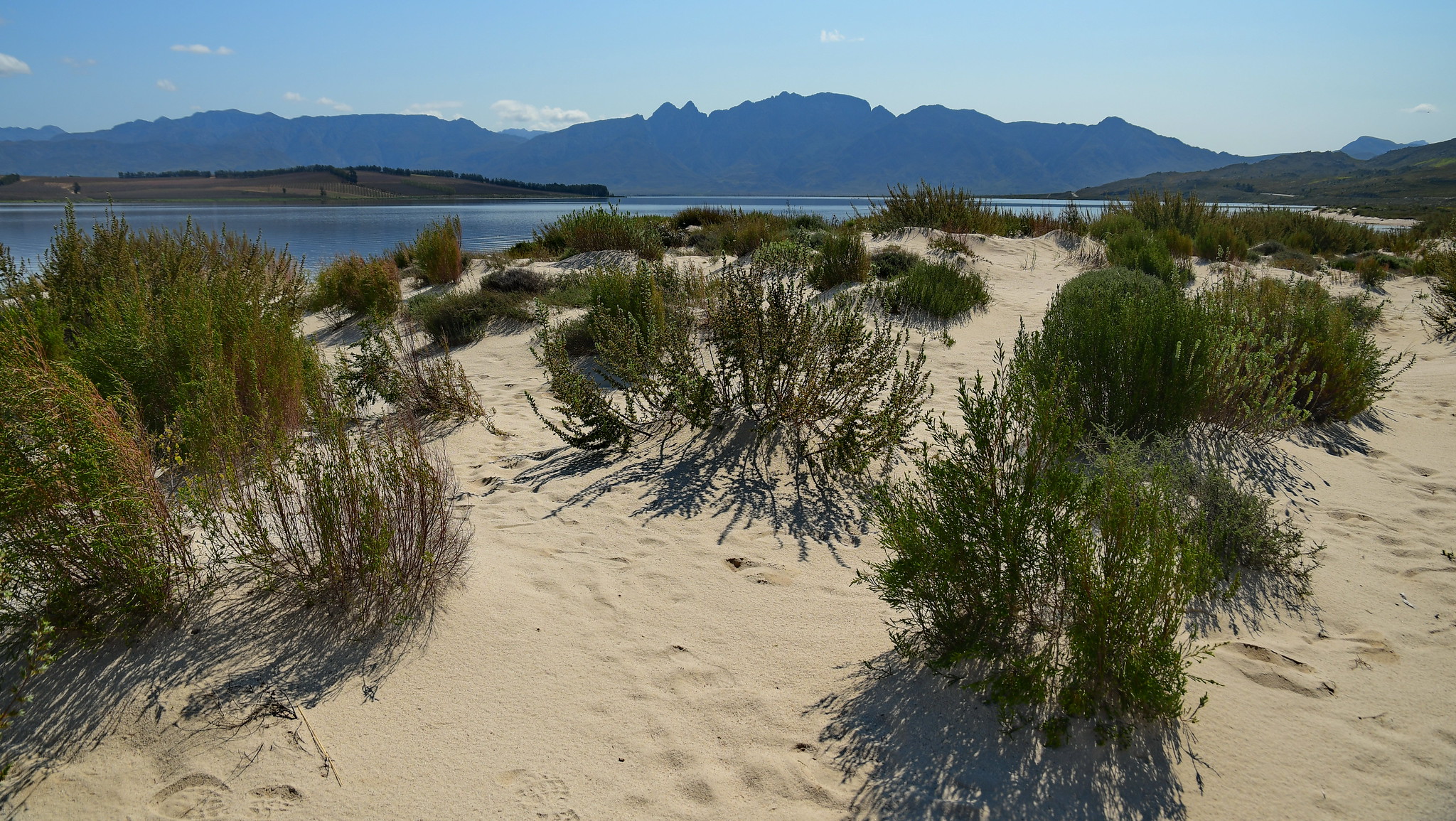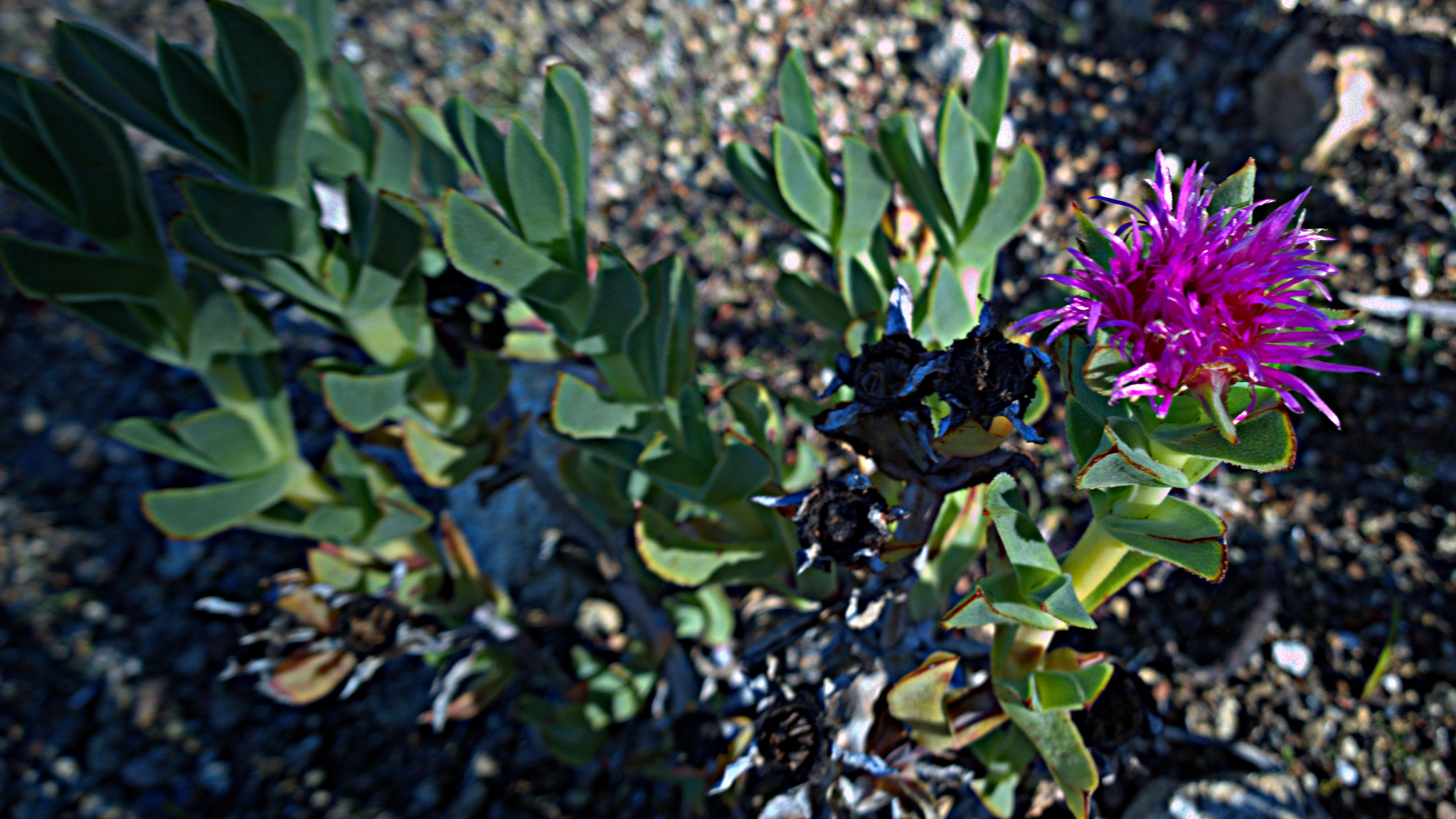
explore the area
Castles in the Sky
As you battle gnarled ridges and deep gorges, you might not have time to appreciate one of nature's greatest marvels, the Cape Floral Kingdom. On account of its incredible flowering profusion, it has been awarded World Heritage Site status. We hope you don't, but should you find yourself taking a tumble here, at least have the opportunity to stop and smell the flowers.
by David Bristow
The three unforgiving climbs on Stage 5, along with the technical singletrack of Stage 6, epitomise the Absa Cape Epic’s wild, untamed African promise. Once you descend from Rusty Gate though, you hit the flattest and consequently fastest section of the race, namely Theewaterkloof Flats that skirts the dam of the same name along mostly sandy tracks. This relatively non-technical section should give you time to reflect on things: like what is this fynbos thing the locals all talk about.
Should you happen to hit a clump of it and find yourself face-planted anywhere along this super-fast stretch, try to count the number of species of your little square metre of dirt while you recover. You’ll find more plant species there than you would in any other square metre on Earth. This extraordinary botanical speciation is the result of interminable time, allowing nature to work its magic.
Each nook and cranny of these contorted mountains offers a different ecological niche for plants to develop new species: it’s how evolution works.

Theewaterskloof dam was named for the tea colour of the waters that flow out of the Hottentots-Holland Mountains, stained by plant tannins of the fynbos.
Each nook and cranny of these contorted mountains offers a different ecological niche for plants to develop new species: it’s how evolution works. The Cape’s characteristic vegetation actually originates in East Africa, from where it drifted down the various mountain “islands” much the way early Polynesians inhabited the Pacific islands. When it reached the Cape Folded Mountains – boom! Mother Nature went crazy. If you weren’t racing as if your life depended on it, you might stop along the way to smell the flowers: there are more than nine thousand species in all. The Cape Floristic Region World Heritage Site consists of all the mountain areas where fynbos is conserved, so you should know it well by the end of the race...
Then suddenly you turn left onto a tarred road, the only one you’ll encounter but one that has featured in many past Absa Cape Epics. It’s the Franschhoek Pass and it might seem tame now, but it hasn’t always been this way. Whenever we embark on a significant journey, be it life or a bicycle race, it serves us well to sometimes reflect on things – like from where we have come.

It looks like drab green-grey scrub, but the fynbos vegetation of the Western Cape is, per square metre, the richest floristic region of Earth.

Val de Vie hosts the Grand Finale of the Absa Cape Epic for the fifth time. A hero’s welcome awaits the finishers of the 2022 Absa Cape Epic.
The first hairpin bend passes a small stone bridge known as Jan Joubertsgat. It was constructed back in 1819 when a local farmer named Cats was commissioned by the Cape government to improve an old elephant migration trail that was proving treacherous for wagons. Insignificant today perhaps, but this structure was part of the first road in South Africa we can say was engineered. Cats se Pad was also possibly the first such one in all of Africa after the Romans tucked their togas between their gluteus maximi and hotfooted out of Egypt back in 641. But Governor Somerset was not impressed and several years later he dispatched a Major Holloway and his team of army engineers to upgrade it.
Insignificant today perhaps, but this structure was part of the first road in South Africa we can say was engineered.

The Franschhoek Valley remembers the French Huguenot refugees who were settled here in the late 17th century. Previously it was known as Olifantshoek, the gathering place of elephants.
After descending the pass at break-neck speed the Absa Cape Epic enters the Franschhoek Valley, along with Stellenbosch the most highly prized wine terroir in the country and a weekend place to be seen. It was previously called Olifantshoek after the elephant herds that would gather here in preparation for their seasonal trek over the mountains. The valley is exited via lower Assegaiboskloof, which embraces the Berg River dam, then a final climb up Botmaskop before descending to the third and final race village in Stellenbosch.
The final two stages of the 2022 Absa Cape Epic, the first being by far the more dramatic of the two, takes you first deep into Stellenbosch’s world-renowned trails and then back into the Franschhoek district where you really get to rub noses with these mountains. This is where you will see and feel the awesome power of deep geological time. Those massed buttresses, domes and spires of the Banhoek, Helshoogte and Jonkershoek sections – veritable “castles in the sky” – are about as close as you can come to big wall climbing while on a bicycle.
As you negotiate the challenging twists and turns, you can dwell on the fact that the name Banhoek comes from bang hoek, or frightening corner. The mountains here were formed way back in the mid-Paleozoic Era (around 350 mya*), before the super-continent of Gondwana was ripped apart by the gargantuan forces we call continental drift during the mid-Mesozoic Era (circa 150 mya). Originally they were thrust, buckled and twisted as high as seven thousand metres. But a hundred and fifty million years of pounding and planing has rendered them to what effectively are just stumps now.
But a hundred and fifty million years of pounding and planing has rendered them to what effectively are just stumps now.

Simonsberg is a side spur of the Boland mountains, part of a much larger system of folded mountains that formed around 100-million years ago when Africa wrenched free of the ancient Gondwana super-continent.
The final stage, from Stellenbosch to Val de Vie Estate, combines many of the thrilling trails used by local mountain bikers, mostly along the Simonsberg sub-range of the Hottentots-Holland Mountains. The Simonsberg might appear less daunting than what you have already encountered, but only a fool would underestimate it. In January of 2004 Norwegian shipping tycoon, Everest summiteer and polar explorer Arne Naess did just that while out on a pre-breakfast scramble … and fell to his death. We’re sure you’ll be safe up there though.
Finally you arrive at Val de Vie, exhausted and triumphant. It’s really more of a lifestyle valley since the tired old farm was given a complete make-over replete with luxury residences, 42 kilometres of mountain bike, jogging and walking trails, vineyards, stables and paddocks, an international standard golf course, restaurants, a coffee roastery, deli and wine cellar. Once safely across the line and with your Absa Cape Epic finisher medal proudly hung around your neck, you can now relax in the extensive estate and reflect on all those things you thought about over the past eight days: like deep time and equally deep endurance.
(* mya = million years ago)
Photos courtesy: Val de VIe, Philogene, Nick Farnhill, John Rusk and Judelle Drake on flickr; Jacques Steenkamp